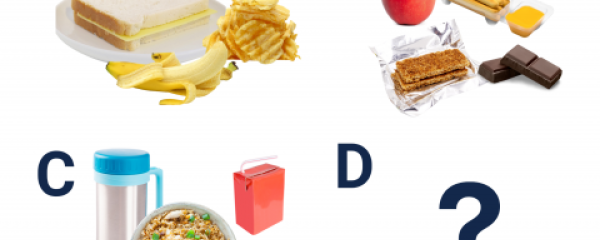What is it all about?
Students analyze food product packaging that is targeted at young children, in order to understand how food marketing techniques influence their food and beverage choices. Students express their thoughts and feelings about product packaging and apply their understanding to making the healthiest food choices available to them.
Curriculum Connections
Grade 1
Health & Physical Education: A1.1, A1.3, A1.5, A1.6, D1.1
Language - Media Literacy: 1.1, 1.2, 1.3, 1.4, 1.6, 2.1, 2.2, 3.4
Grade 2
Health & Physical Education: A1.1, A1.3, A1.5, A1.6, D2.2
Language - Media Literacy: 1.1, 1.2, 1.3, 1.4, 1.6, 2.1, 2.2, 3.4
Grade 3
Health & Physical Education: A1.1, A1.3, A1.5, A1.6, D1.1, D2.1
Language - Media Literacy: 1.1, 1.2, 1.3, 1.4, 1.6, 2.1, 2.2, 3.4
What is needed?
- Different food packages targeting young children (e.g., boxed cereal or cookies, fruit with stickers displaying fictional characters from cartoons, comics, or movies).
- Tablets or paper, pencils, and colouring materials for redesigning food packaging.
How is it done?
- Select and display images or bring in different food packaging that targets young children.
- Have students identify the various elements of the different food packages that draw their attention. Examples of food packaging elements students may describe include the colours and pictures used, characters displayed, words that stand out, and shapes of the images, words, and food contained inside (e.g., animal shapes, stars, hearts).
- Facilitate a large-group discussion. Tell students to think about and explain why they think the food producer chose to design the different packages using these colours, images, characters, words, and shapes. Ask students to say why food producers might choose to include prizes in the packages. Draw attention to how the design elements of the packages might make them feel and think about the food inside. Guide the discussion using discussion prompts such as:
- “Who do you think the food is geared towards: babies, children, teenagers, or adults? Why?”
- “What do you really like about the packages? Why?”
- “How do the colours, shapes, and characters make you feel (e.g., happy, hungry, like a superhero)?”
- “Does one colour make you think one food is more or less nutritious than another? Explain.”
- “What do the characters, images, and words make you think about the food (e.g., It’s nutritious. It will help me grow. It will make me stronger. It will help my brain grow)?”
- “Look at each of the packages. What on them tells you that food might be a more nutritious food choice?”
- “How might a package’s design influence your decision to select the food or ask someone to buy it for you?”
- “Which food would you choose? Why?”
- Have students work in pairs to create and then share one question they might ask about any of the packaged food items to determine if it is a food that provides their body with the energy and nutrients to be active, grow, and learn.
Teacher prompt: “What questions would you ask about the food before you make your choice?”
Student responses:
- “What do I want to know about this food?”
- “Is this a meal food or snack food?”
- “How will this food help nourish my body and brain?”
- “Is this a food I would choose to eat during the school day? Will it help me be my best and ready to learn?”
- “Is this a food I would choose more often, or is it a food that I would choose as a treat?”
- “Is this something I would ask someone to buy for me? Why?”
- Consolidate the discussion by having students share one thing they would look for on the packaging when choosing food for a meal or a snack. Prompt students to remember that the package design is a marketing strategy: it is meant to persuade them to buy the food.
- Have students work in small groups and choose one of the packages to redesign. Ask them to redesign it so the packaging helps people decide quickly whether it will be: a healthier food choice for a meal or snack; and/or how it helps children grow and learn. Give them some discussion prompts:
- What words would they add?
- What colours would they use?
- What pictures would they remove, replace, or add?
- What character would they use? What would the character say?
- Have groups share their new packaging ideas with the class. Have groups explain why they made the changes and how the changes will help others make an informed choice when selecting the food options available to them.
Opportunities for Assessment
- Use student responses in the large group discussion to assess students’ understanding of food marketing techniques used to influence their food choices.
- Use the student-generated questions to assess students’ understanding of how to use information on packages to make informed food choices, considering foods available to them.
- Use the group-generated packaging ideas to assess students’ understanding and application of media conventions and techniques.
Ideas for Extension
Have students identify other products that they frequently see and decide whether a package uses the same techniques that they see with other foods marketed to appeal to children.
Educator Notes
- Students bring their learning home to their families, and they have variable amounts of control over the food they eat at home and the food they bring to school. Consult Creating a Safe and Inclusive Learning Environment for tips on talking about healthy food choices.
- Consult Additional Resources for more information about marketing techniques and their influences on food choices.
- Consult Canada’s Food Guide for more information about marketing influences on food choices and tips for making healthier food choices in a variety of settings.



